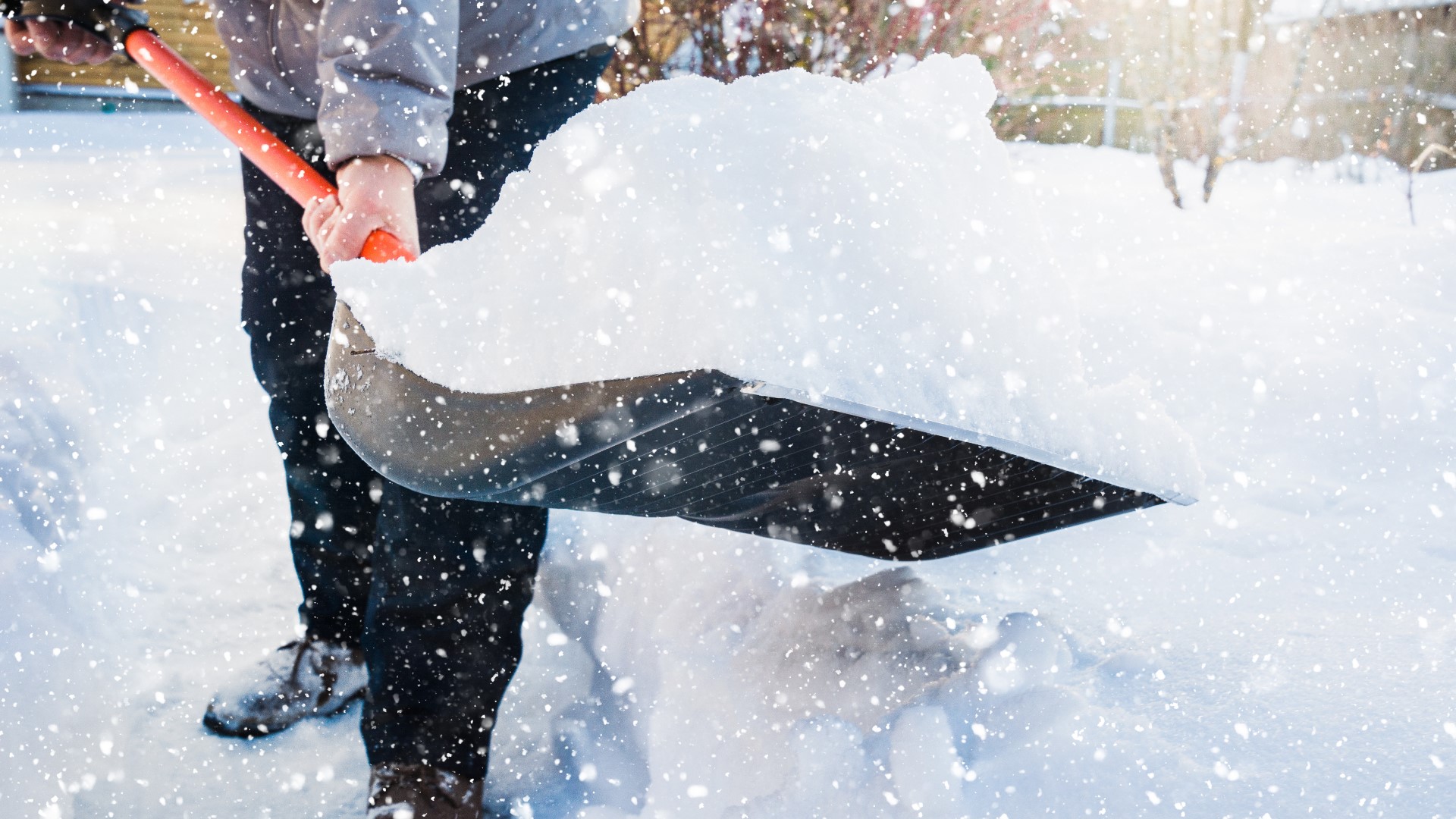WHAS11 First Alert StormTeam's Winter Forecast: How much snow will fall this winter
The First Alert StormTeam breaks down historical Kentuckiana winter weather and factors at play for this year's cold season.
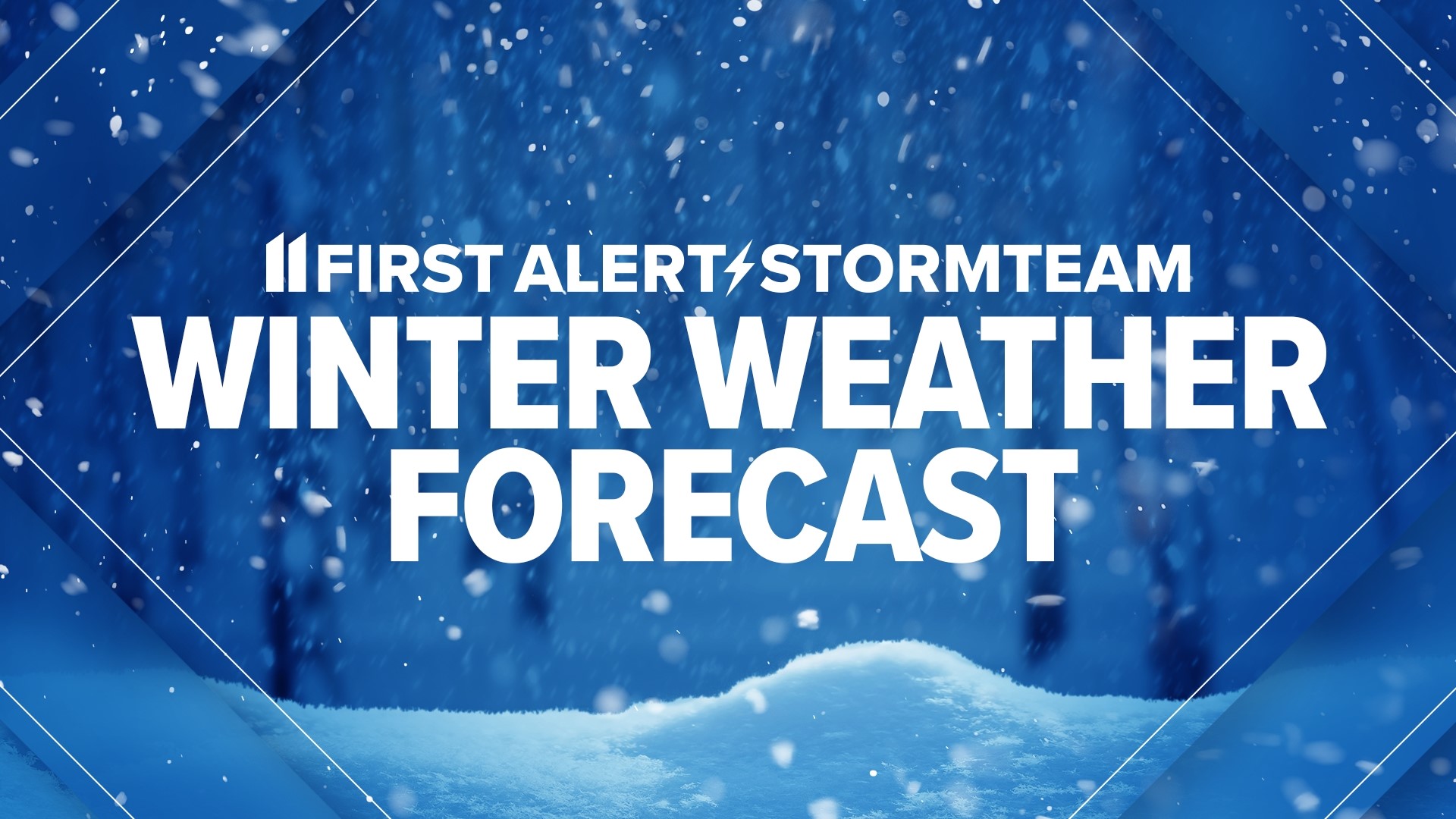
Winter is now less than a couple of months away and we all know Kentuckiana winters can be challenging with the potential of snow, ice, even heavy rain, and severe weather.
Of course, we are up to the challenge of giving you our 2023-2024 winter weather prediction.
But first, let's start with the science of understanding the overall weather pattern we're expecting this winter and it's all about El Niño.
El Niño Impact in Kentuckiana
You've probably heard about El Niño that is going to influence our winter weather this year, but what exactly is it?
As Meteorologist Alden German explains, under normal circumstances, warm water from the equatorial Pacific is blown westward into the Oceania region.
During an El Niño event, however, that process is reversed, and warm ocean water kind of ‘piles’ up along the western coast of South America.

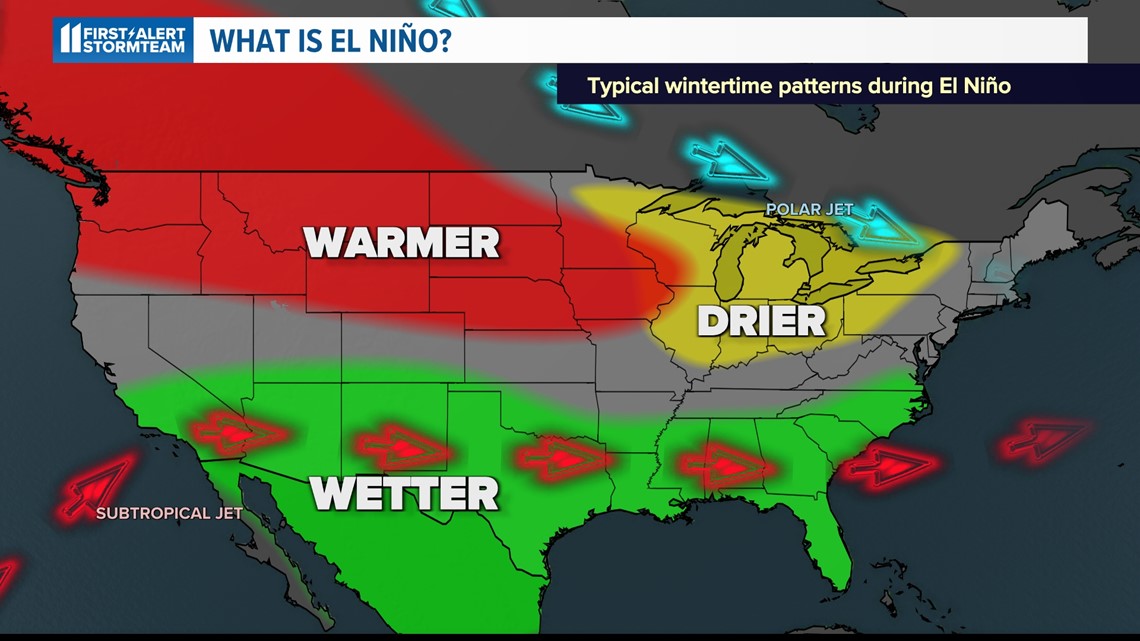
So, what does that mean for us? Well, it has a great influence on our jet stream patterns that results in generally warmer than normal conditions in the Pacific Northwest and Rocky Mountains, much wider conditions across the southern half of the United States and generally drier than normal conditions in parts of the Ohio Valley.
But for us here in Metro Louisville, we're in kind of a battleground zone between drier-than-normal and wetter-than-normal conditions. All it takes is one big storm system to give us a lot of extra snow.

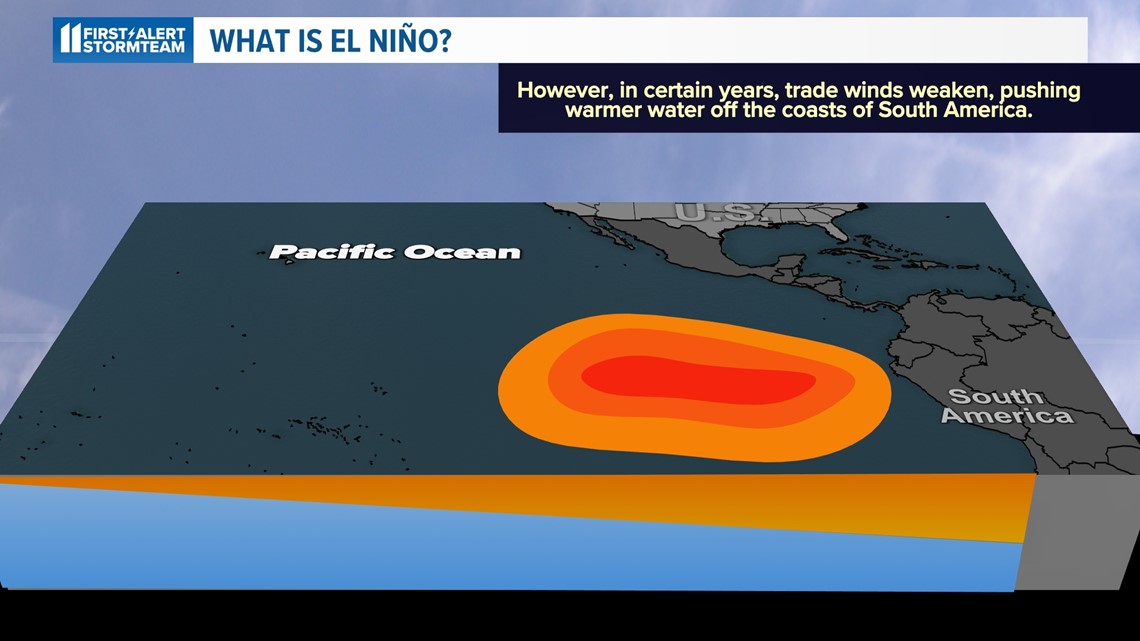
Canadian "Clippers" Where will the snow come from?
Now within this overall weather pattern, there are individual storms that can impact our area. Winter storms behave differently depending on where they're coming from.
Meteorologist Sam Gabrielli shows us that the location and path can make a big difference.
During the winter season, you may hear us refer to the term “clipper” from time to time.
A clipper system, otherwise known as an Alberta Clipper, is a fast moving storm system that moves southeast out of the Canadian province of Alberta. The quick-moving clipper then cruises through our friends in the Upper Midwest and Great Lakes region.

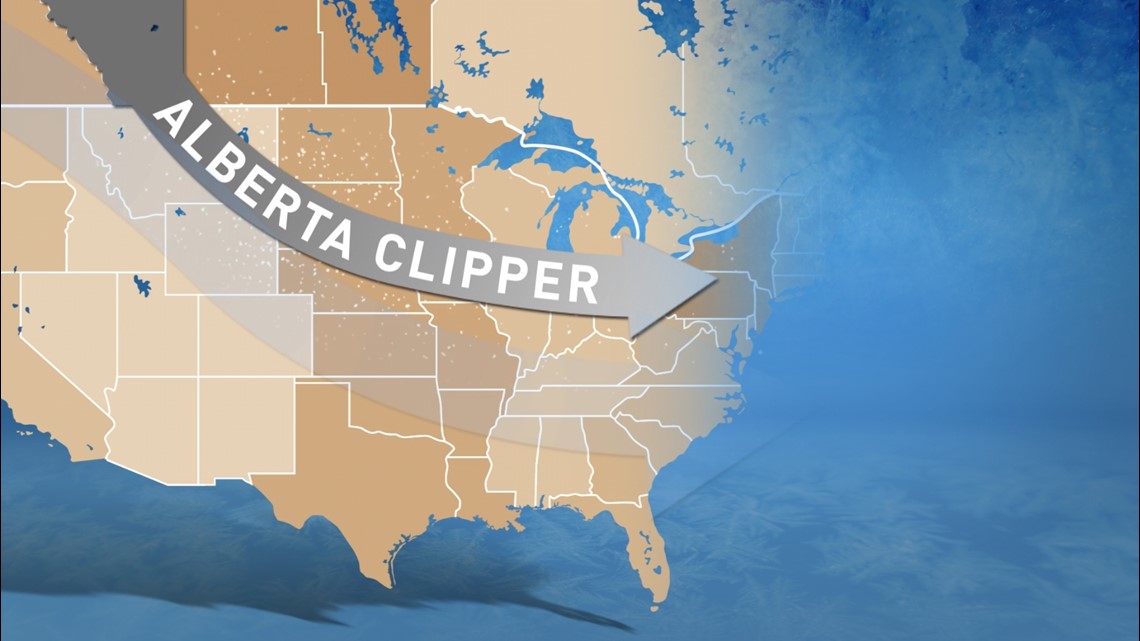
This type of storm system often brings a quick punch: very light snow, a snow dropping one to three inches, gusty winds, and colder temperatures too much of the area.
Sometimes, we'd like to have a little bit of fun with these storm systems.
You may hear us refer to them as "Saskatchewan Screamers" or "Manitoba Maulers." It's the same thing we're referring to.


If the jet stream is locked out in a northwest pattern we can expect several of these storm systems to swing through during winter. We often blame our friends in Canada for these quick bursts of snow and cold.
If you're looking for much heavier snowfall though, it's usually not going to be coming from our friends to the northwest of us.
The low pressure systems that do result in heavy snows in Kentuckiana will come out of the southern Plains states and desert Southwest. These systems have a lot more Gulf of Mexico moisture associated with them, and that gives way to much heavier snow – especially if Kentucky is placed on the northern periphery of that low pressure as it drifts north and east.
Historical records 'Normal' snowfall in Kentuckiana
Now each winter around here is different, but we have a lot of data since the late 1800s and we can show you what's most typical for us to get in the extremes.
Meteorologists Colleen Peterson and Christina Sanjuan show us what would be a normal winter for snowfall and temperatures in Kentuckiana.
During the wintertime we expect it to be cold, but some years are more frigid than others. The average high temperature for the whole season is 46° and the average low is 30°.
Typically, our coldest temperatures of the year come in January, but remember last year's cold snap? It was in December. We didn't make it out of the single digits and experienced some of the coldest wind chills Louisville has seen in 25 years.

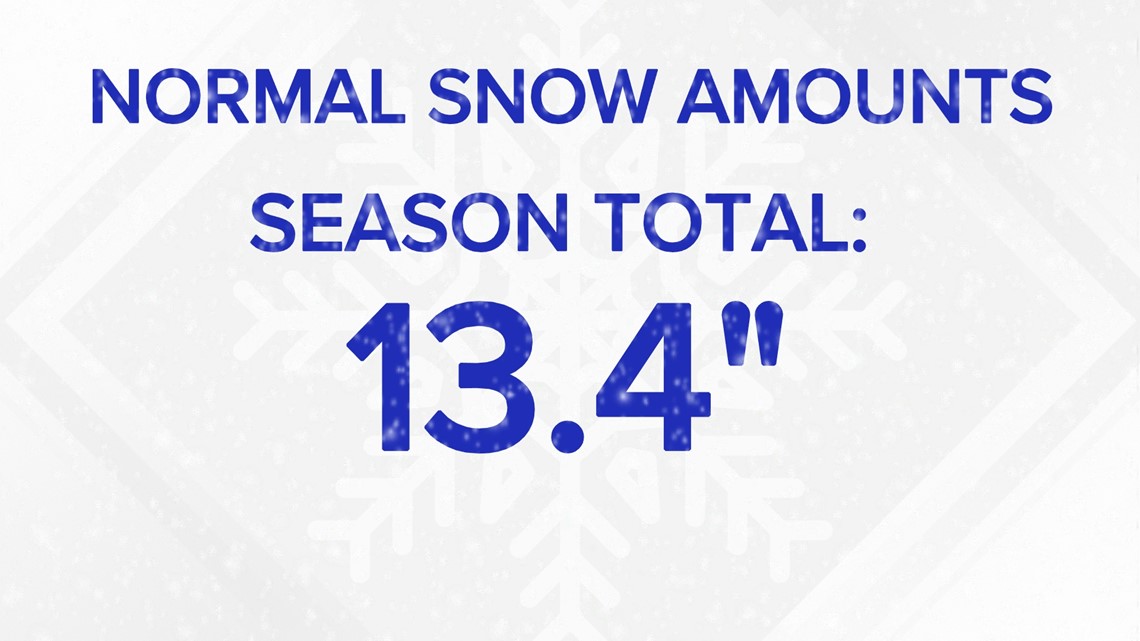
Let’s go back to the year 1994. It was a record-setting January bringing the coldest temperature Louisville has ever seen dropping down to a bitter -22°.
Shelbyville, Kentucky holds the title for the lowest temperature ever recorded in the Commonwealth, which was felt that same exact year when it dropped to a downright frigid -37°.
Since we're already cold just thinking about that number, let's talk about snowfall.
Everyone wants to know how much snow we’re going to see this season, and that is a very hard forecast to nail.
In case you're curious of the record snowfall in Louisville it was back in the winter of 1917-18 where we got 50.2 inches of snow. The second was winter 1977-78 when 50.1 inches fell here in Louisville.


Breaking it down by month, normal snow amounts in December are around two inches.
In February, the average amount is four inches. The starting point of a forecast is seeing what our overall average snowfall is across the entire season or average snowfall is 13.4 inches in Louisville, Kentucky.
WHAS11 Winter forecast So, how much snow?
It doesn't appear El Niño has a significant correlation to help predict whether our overall winter weather will be warmer or colder than normal.
However, it so happens that over the last 25 years, four out of the last five moderate to strong El Niño winters have produced a lot of snowfall.

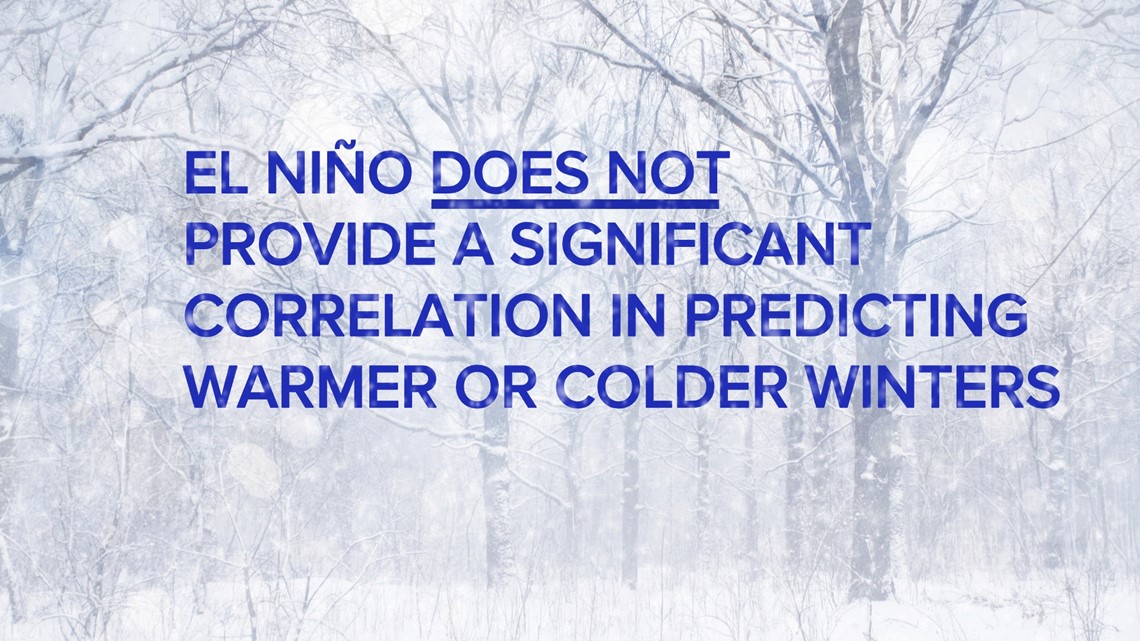
Our official snowfall forecast is an above normal 15 to 20 inches total for the entire snow season coming down mostly in the last half of our winter.
When the snow does finally fall, you can guarantee the WHAS11 First Alert StormTeam be tracking it for you covering the road conditions live with our storm tracking vehicle the Weather Beast with meteorologist Reed Yadon and storm chaser John Humphress.
This snowier than normal forecast is for you, Doug Proffitt, and all of the other snow lovers in our area.
Make it easy to keep up-to-date with more stories like this. Download the WHAS11 News app now. For Apple or Android users.
Have a news tip? Email assign@whas11.com, visit our Facebook page or Twitter feed.


